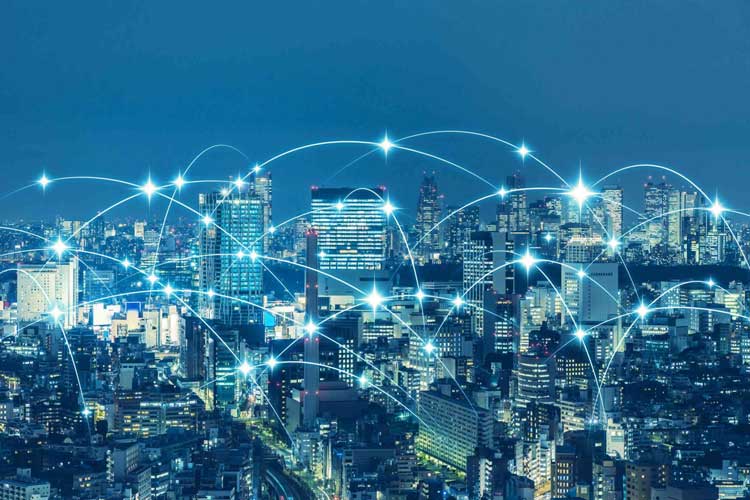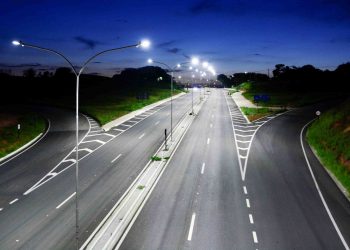
Learn now what a smart city is and how this concept is applied
Do you know the importance of the smart city concept for the future of urban space utilization? As far as we know, Earth is the only place capable of hosting intelligent life in the way we know it. There is no expectation, at least for the next few decades, of a new planet we can go to. With that in mind, it is essential to take care of the place where we live and its biodiversity in an intelligent way.
Although many people still do not know what a smart city is, it is one of the best ways to use urban spaces in a connected, responsible, and sustainable way to preserve them.
If you want to learn more about the topic, continue reading this post to better understand what a smart city is and how we can use its innovative concepts in a business environment. Keep reading and check it out!
What is a smart city, and what do you need to know about the topic?
In summary, this name must be associated with a single word: efficiency. Everything that revolves around a smart city is deliberately worked on in a way to obtain the best results in less time, with more resource utilization, and so on.
However, this innovative system has a “technological footprint” that makes it very interesting from a strategic point of view for urban centers. This is because the use of information technology (IT) is increasingly accessible.
Big data, the Internet of Things (IoT), broadband, cloud storage, for example, are tools that enable the creation of a smart city and work in favor of people. A simple example, already widely used, is the traffic light timing system.
Based on data such as rush hour, day of the week, the number of vehicles in both directions, pedestrian flow, weather, and others, traffic agents can predict the ideal time that each signal should remain open or closed to optimize the traffic in that region.
This is a very simple example compared to the potential that a city can achieve by using technological and intelligent resources to manage its systems. The next step would be to communicate all the intersections in the city with hospitals, police centers, and fire departments, in order to give priority access on the roads.
What are the characteristics of a smart city?
As the name smart city has only recently been used, there is still no consensus defining exactly what makes a city smart. However, an interesting approach is to say what aspects a municipality needs to improve to become more efficient. Among the main ones, we highlight:
- Sustainability;
- Mobility;
- Integration;
- Connectivity;
- Planning;
- Quality of life;
In a smart city, citizens have ample access to these services. For example, internet coverage, both by the availability of mobile network operators and by fixed and free points, allows facilities such as consultation and scheduling of services to be carried out by applications – which simplifies and streamlines the service.
In addition, it is not enough to be efficient. A smart city has to grow sustainably, with recycling collection services, efficient reverse logistics systems, conscious consumption of energy (chemical and electrical), among others.
When all these factors are improved – and consequently the quality of life of its inhabitants – one should look for bottlenecks that can still be improved, in a cycle similar to continuous improvement or Kaizen methodology – which is already applied in companies.
How to apply the concept of a smart city in my company?
Here, we have good news for you, who seek to efficiently and sustainably improve your work environment by applying the concept of a smart city in a very simple way.
It is possible to turn your company into a small smart city, since the management systems required for this city model are similar to those commonly applied in the work environment. This includes the efficiency with which services should be provided and the necessary environmental care.
Let’s deal with some very specific examples, but which are rooted in the pillars of this new concept. Starting with the lighting system. In a smart city, it is expected that there will be no waste of electricity with lighting in non-moved or surplus areas, or insufficient, for example.
A smart system, in this case, is one that provides precisely the ideal amount of light, at the right times, efficiently – using LED luminaires – and autonomously, without an operator having to turn on or off bulbs.
If you found the smart lighting example too trivial, let’s look at the case of promoting technologies enabled by industry 4.0, which simply turns any business into smart. As mentioned earlier, a smart city must connect all its services and present solutions autonomously and in real time.
Thus, a smart company is one that uses IT and other tools to make the plant intelligent, with minimal human interference. Thus, it produces automatic reports on production, maintenance, stocks, demands, and others.
In addition, a company can monitor its employees and partners through existing technologies, such as facial recognition, integrate systems and processes, communicating the purchasing, production, and sales sectors, for example. All of this, applying the existing concepts for smart cities.
If you think you need to invest a lot to make your company more technological, you are mistaken. Changes can be made gradually, and costs spread over the period of a strategic plan.
A great candidate to be the first to experiment with these changes in the company, therefore, is the lighting system – automation and luminaires with DALI protocol – followed by personnel access control.
Another advantage of this concept is that it has already been tested and applied in large centers. There are many examples, such as Songdo in South Korea, Singapore, and Copenhagen. They are all references on the subject for having sought creative and intelligent solutions to specific problems.
Trends like the smart city are no longer exclusively for large and wealthy urban centers and, like other technologies, are necessary for sustainable, efficient, and autonomous development. In addition, they are good for the health of the planet, especially by using limited resources consciously.
What are the main challenges in applying the concept of smart cities and how to overcome them?
Now that you understand what a smart city is and even know how to apply this concept in a company, we will present below its main challenges and what needs to be done to overcome them. See!
Adequate Infrastructure
In order to enjoy the benefits of a smart city, it is essential to invest in technology and infrastructure with a focus on efficiency. Having adequate infrastructure is crucial.
After all, progress is directly related to new concepts of urban infrastructure, collective and less polluting means of transportation, conscious use of natural resources, monitoring cameras that help with collective well-being, modern security systems, and so on.
Although setting up adequate infrastructure can often seem like a challenge, the truth is that there are tools available nowadays that allow this process to be carried out in a simple and agile way.
For example, in terms of lighting, it is precisely adequate infrastructure that allows intelligent sensors installed in streetlights to reduce public lighting when the area is empty. They also increase lighting when there is a person present, which contributes to reducing electricity costs and improving safety.
In addition, in a smart city, in cases where there is a power surge and electricity is no longer supplied in a certain area of the city, information is sent in real time to the central systems. This is due to sensors integrated into the security system, which is only possible when the place has adequate infrastructure.
After the alert, a team must be sent to perform maintenance on the location and public lighting. For this reason, it is unlikely that any part of the municipality will remain vulnerable to the actions of ill-intentioned people, contributing to the well-being of the population and public safety.
Other smart cities also use technology to reduce carbon emissions and, consequently, the use of fossil fuels. To do this, it is necessary to encourage the use of sustainable means of transportation with low emissions of polluting gases, and to create a network of bike lanes to encourage residents to use bicycles instead of cars.
Connectivity
Another fundamental factor in a smart city is network connectivity. This is because it is necessary for the connection to work properly in all locations and endpoints of the city, as service and server fluctuations can compromise the efficiency of sensors, for example.
In this sense, technology nowadays has a solution for this problem: the Internet of Things (IoT). IoT is responsible for this activity and performs all the work of integrating a smart city.
Technological Integration
For a smart city to function properly, one of the most relevant points is undoubtedly technological integration. After all, one of its main characteristics is that all items communicate with each other.
However, difficulties are common in this regard. For example, a traffic light that has sensors capable of counting how many vehicles pass through the area and that relates to other signals on the road. Thus, they autonomously and integrally change the timing of the red light to green or vice versa, in order to improve traffic in a certain area.
In this case, if the technologies used in these traffic lights are different from the sensors that are implanted with the objective of measuring traffic flow and speed radars, the tendency is that communication between them is impaired, as there is no adequate integration.
Thus, the main solution is to use compatible technologies, that is, they need to communicate with each other in order to solve the integration issue.
Data Security
Another major challenge for a smart city is data security. As this city model relies on sensors to assess all aspects, such as traffic, lighting, waste collection, hospital and school functioning, among others, it is important to observe who is responsible for this data and how it will be used.
Initially, it is necessary to determine the party responsible for managing the generated information and data. This can be the city government, public agencies, or a management company contracted for this purpose, for example.
Choosing the party responsible for managing and securing data is often a delicate decision, as it concerns the privacy and freedom rights of local citizens.
One solution to this issue may be the creation of an open ecosystem, with data owners and providers working together to avoid being trapped with a technology supplier.
Another option to address data security is to rely on consulting companies. They should act as mediators in this process, bridging the gap between cities and IT organizations.
Data Overload
Finally, another problem that may be encountered is data overload. This is because a smart city relies on many sensors, technologies, and data connected simultaneously.
In this case, it is worth noting that, although this is a common fear among managers, nowadays, there is technology and advanced servers capable of efficiently handling a large volume of data.
For example, Big Data is a technology capable of processing, analyzing, and obtaining information from data sets that are too large to be analyzed by common systems.
Now that you know what a smart city is, you may have realized that this sustainable and technological concept has different benefits. It can be used in cities, large centers, as well as in companies and condominiums.
Did you like learning more about the concept of smart cities and how your company can use it? Then, share it on your social media and keep your friends or clients informed about this subject too!
Now you’re convinced SX Lighting can offer the best lighting solutions, click here and request support from our specialists.
Share






